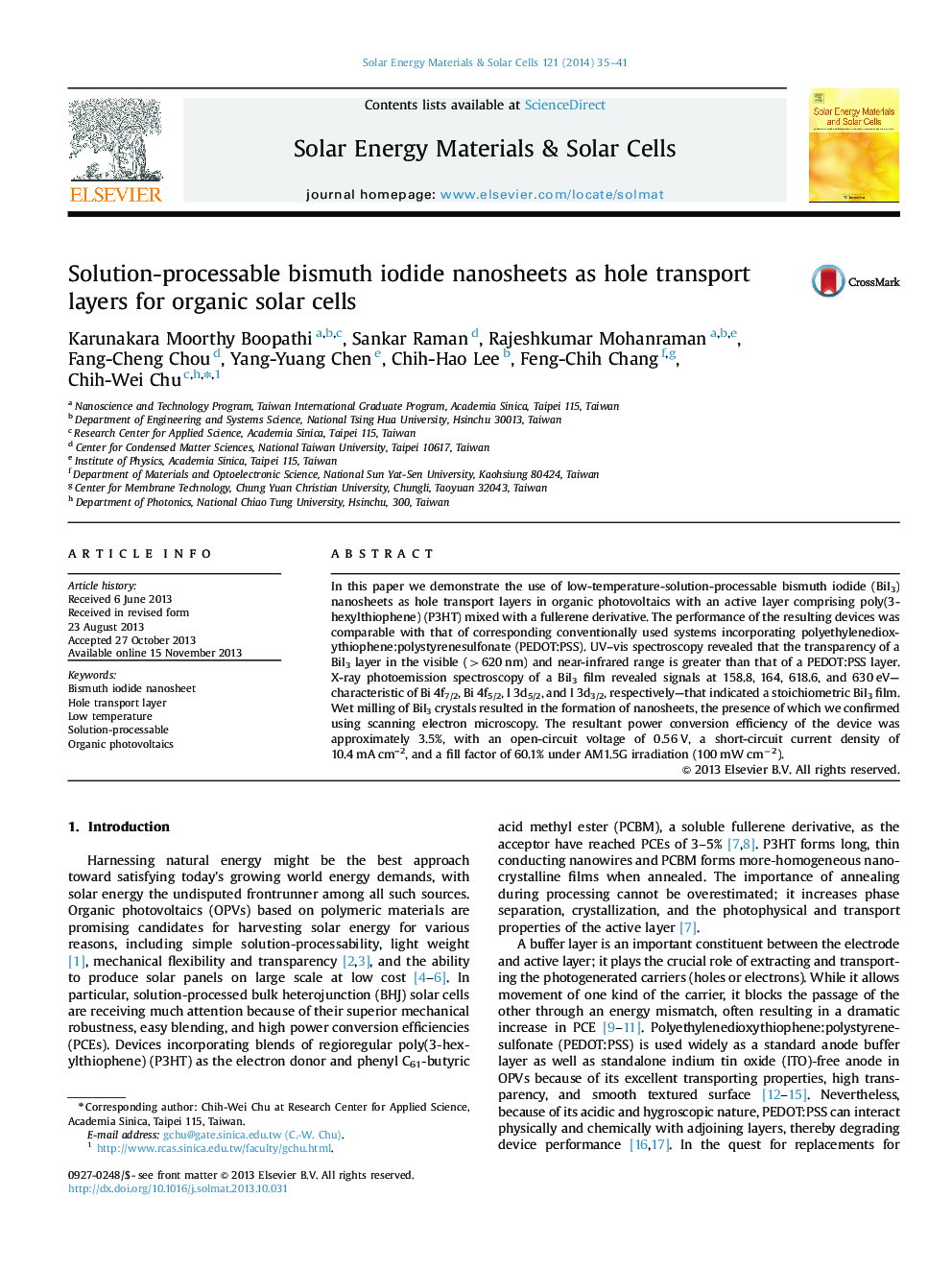| Article ID | Journal | Published Year | Pages | File Type |
|---|---|---|---|---|
| 78201 | Solar Energy Materials and Solar Cells | 2014 | 7 Pages |
•BiI3 nanosheets prepared using a low-cost homemade wet grinder.•XPS confirmed the formation of stoichiometric BiI3 films on the substrates.•BiI3 has been used as low-temperature-solution-processable hole transport layer.•Performance of devices incorporating BiI3 as HTLs is comparable with that of devices featuring PEDOT:PSS layers.
In this paper we demonstrate the use of low-temperature-solution-processable bismuth iodide (BiI3) nanosheets as hole transport layers in organic photovoltaics with an active layer comprising poly(3-hexylthiophene) (P3HT) mixed with a fullerene derivative. The performance of the resulting devices was comparable with that of corresponding conventionally used systems incorporating polyethylenedioxythiophene:polystyrenesulfonate (PEDOT:PSS). UV–vis spectroscopy revealed that the transparency of a BiI3 layer in the visible (>620 nm) and near-infrared range is greater than that of a PEDOT:PSS layer. X-ray photoemission spectroscopy of a BiI3 film revealed signals at 158.8, 164, 618.6, and 630 eV—characteristic of Bi 4f7/2, Bi 4f5/2, I 3d5/2, and I 3d3/2, respectively—that indicated a stoichiometric BiI3 film. Wet milling of BiI3 crystals resulted in the formation of nanosheets, the presence of which we confirmed using scanning electron microscopy. The resultant power conversion efficiency of the device was approximately 3.5%, with an open-circuit voltage of 0.56 V, a short-circuit current density of 10.4 mA cm–2, and a fill factor of 60.1% under AM1.5G irradiation (100 mW cm−2).
